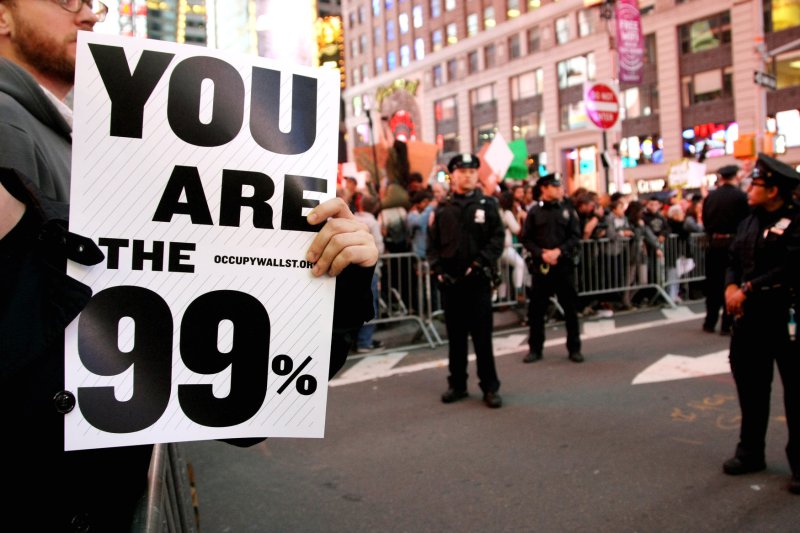1 of 5 | Police keep an eye on the thousands of protestors who are taking part in the Occupy Wall Street rally in Time Square as they call for the end of corporate greed on October 15, 2011 in New York City. Similar demonstrations are being held today around the world as protestors call for a reform in capitalism policies. UPI/Monika Graff |
License Photo
WASHINGTON, Oct. 26 (UPI) -- After-tax household income rose 275 percent for the top 1 percent of U.S. households from 1979 to 2007, far above any other segment, a report showed Wednesday.
The Congressional Budget Office said the inflation-adjusted, after-tax household income for the rest of the top 20 percent grew by 65 percent over that period.
The 60 percent of the population in the middle of the income scale -- the 21st through 80th percentiles -- saw average real after-tax household income rise just under 40 percent.
The bottom 20 percent experienced 18 percent growth.
The report's summary also said from 2005 to 2007, the after-tax income received by the 20 percent of the population with the highest income exceeded the after-tax income of the remaining 80 percent.
The CBO said it examined the 1979-2007 period because those endpoints allow comparisons between periods of similar overall economic activity, with 1979 and 2007 both being years before recessions started.
"The major reason for the growing unevenness in the distribution of after-tax income was an increase in the concentration of market income (income measured before government transfers and taxes) in favor of higher-income households; that is, such households' share of
market income was greater in 2007 than in 1979," the CBO summary states. "Specifically, over that period, the highest income quintile's share of market income increased from 50 percent to 60 percent ... . The share of market income for every other quintile declined.
"In fact, the distribution of market income became more unequal almost continuously between 1979 and 2007 except during the recessions in 1990-1991 and 2001."
The CBO said two factors accounted for the changing distribution of market income.
"One was an increase in the concentration of each source of market income, which consists of labor income (such as cash wages and salaries and employer-paid health insurance premiums), business income, capital gains, capital income, and other income," the summary states. "All of those sources of market income were less evenly distributed in 2007 than they were in 1979.
"The other factor leading to an increased concentration of market income was a shift in the composition of that income. Labor income has been more evenly distributed than capital and business income, and both capital income and business income have been more evenly distributed than capital gains. Between 1979 and 2007, the share of income coming from capital gains and business income increased, while the share coming from labor income and capital income decreased.










